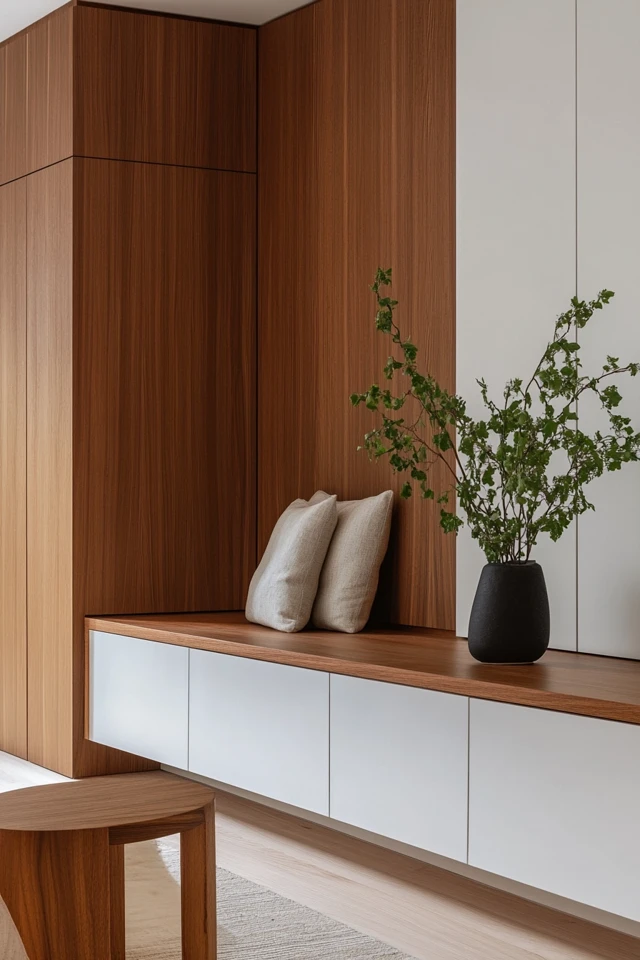Minimalist design is known for its clean lines, simplicity, and calming palette. But sometimes, going all-white can feel a little too stark or clinical. That’s where the combination of wood and white comes in. By pairing natural wood tones with crisp white elements, you can create a minimalist space that’s both warm and inviting while staying true to the core principles of minimalism.
I discovered the magic of wood and white while redesigning my dining room. At first, I wanted an all-white look to emphasize simplicity, but it felt too cold for such a communal space. So, I incorporated a reclaimed wood table and a few subtle wooden accents, and everything changed. The natural wood added warmth and texture without compromising the minimalist aesthetic. It quickly became my go-to approach for balancing modern simplicity with cozy charm.
If you’re ready to elevate your minimalist design with the perfect harmony of wood and white, here’s how to do it.
Why Wood and White Work So Well Together
- Contrast and Balance: White offers a crisp, clean foundation, while wood adds organic warmth and depth.
- Timeless Appeal: This pairing creates a modern yet classic look that never goes out of style.
- Versatility: Works well in various spaces, from kitchens to living rooms, and complements many decor styles.
- Natural Aesthetic: Wood evokes a sense of nature, making the space feel grounded and serene.
1. Start With a White Canvas
Why It Works:
White creates an open, airy backdrop that lets wooden elements stand out.
How to Do It:
- Use white paint for walls and ceilings to maximize light and create a sense of space.
- Choose white cabinetry, countertops, or furniture for a clean foundation.
- Opt for matte or satin finishes to maintain a minimalist aesthetic.
Pro Tip: Soft white tones, like ivory or eggshell, can add a touch of warmth without overwhelming the minimalist look.
2. Incorporate Natural Wood Tones
Why It Works:
Natural wood tones bring organic texture and warmth, preventing the space from feeling sterile.
How to Do It:
- Add a wooden dining table, coffee table, or bed frame as a focal point.
- Use light wood, like oak or ash, for a softer look, or go for walnut or teak for richer tones.
- Incorporate wood through flooring, beams, or paneling for a more architectural touch.
Pro Tip: Keep the wood’s finish natural or lightly stained to highlight its grain and texture.
3. Pair Clean Lines With Organic Shapes
Why It Works:
The sharp, modern edges of minimalist design pair beautifully with the natural curves and imperfections of wood.
How to Do It:
- Use furniture with clean, geometric lines but made of natural wood.
- Incorporate accessories like wooden bowls, trays, or decor with organic shapes.
- Pair a rectangular white dining table with curved wooden chairs for balance.
Pro Tip: Let natural wood grain patterns add visual interest to otherwise clean, minimalist surfaces.
4. Use Wood Sparingly for Maximum Impact
Why It Works:
In minimalist design, less is more. A few carefully chosen wooden elements can make a big statement.
How to Do It:
- Limit wood to one or two key pieces per room, like a console table or headboard.
- Add smaller wood accents, like a lamp base, picture frame, or mirror trim.
- Use wooden shelving to break up white walls without overwhelming the space.
Pro Tip: Keep surrounding elements simple to let the wood take center stage.
5. Mix Light and Dark Woods for Contrast
Why It Works:
Mixing wood tones adds depth and prevents the design from feeling one-dimensional.
How to Do It:
- Pair a light wood floor with darker wooden furniture, or vice versa.
- Use a mix of wood species for variety, such as oak shelving with walnut cabinets.
- Contrast natural wood with painted white furniture for a modern edge.
Pro Tip: Stick to no more than two or three wood tones to maintain cohesion.
6. Add White Textiles for Softness
Why It Works:
White textiles soften the look and add layers of texture while keeping the design clean.
How to Do It:
- Use white linen curtains, rugs, or throw blankets to complement wooden furniture.
- Pair a wooden bed frame with crisp white bedding for a cozy yet minimalist vibe.
- Add white cushions or slipcovers to wooden chairs or sofas.
Pro Tip: Choose natural fabrics like cotton, linen, or wool to align with the organic feel of wood.
7. Combine Wood and White in Kitchen Design
Why It Works:
The kitchen is an ideal space for combining sleek white finishes with warm wooden accents.
How to Do It:
- Use white cabinetry paired with a wooden island or open shelving.
- Add a wooden countertop or butcher block for a functional yet stylish focal point.
- Incorporate wood flooring or bar stools for subtle warmth.
Pro Tip: Stick to minimal hardware, like black or brushed metal, to keep the look clean.
8. Use Wood as an Accent on White Walls
Why It Works:
Wood accents on white walls create subtle texture and visual interest.
How to Do It:
- Add a wooden accent wall using shiplap, reclaimed wood, or slatted paneling.
- Use wooden picture ledges or floating shelves for functional decor.
- Install wooden trim or baseboards for a subtle but cohesive look.
Pro Tip: Position wood accents where natural light can highlight their grain and warmth.
9. Incorporate Wooden Lighting Fixtures
Why It Works:
Wooden light fixtures blend form and function while adding an organic touch.
How to Do It:
- Choose pendant lights with wooden finishes or details for above a dining table or island.
- Use a wooden floor or table lamp to add warmth to a corner.
- Look for minimalist designs, such as thin wooden frames or sculptural shapes.
Pro Tip: Pair wood lighting with warm, soft bulbs for a cozy glow.
10. Keep the Decor Minimal
Why It Works:
Minimal decor ensures the focus stays on the natural beauty of wood and the crispness of white.
How to Do It:
- Limit decor to a few neutral or wood-toned items, like vases or trays.
- Use functional decor, such as a wooden cutting board or white ceramic planter.
- Opt for abstract or nature-inspired art in muted tones.
Pro Tip: Maintain negative space to let the design elements breathe and shine.
Picture Gallery
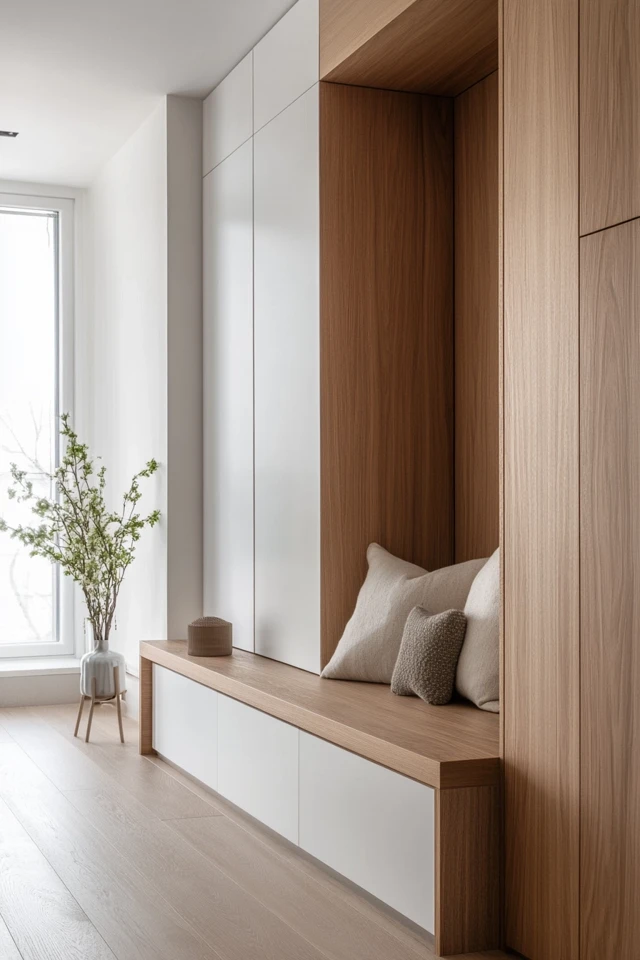
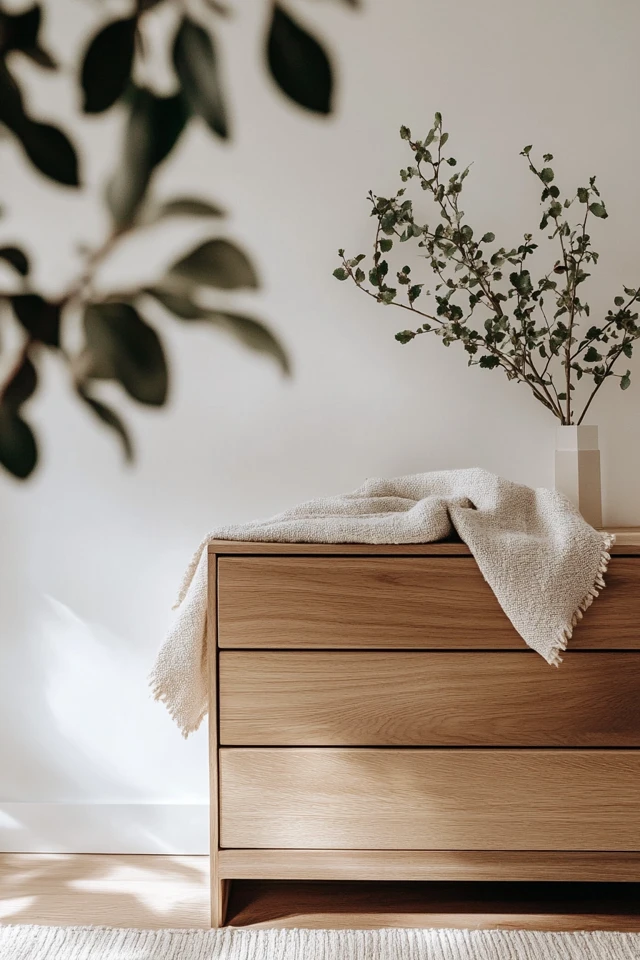
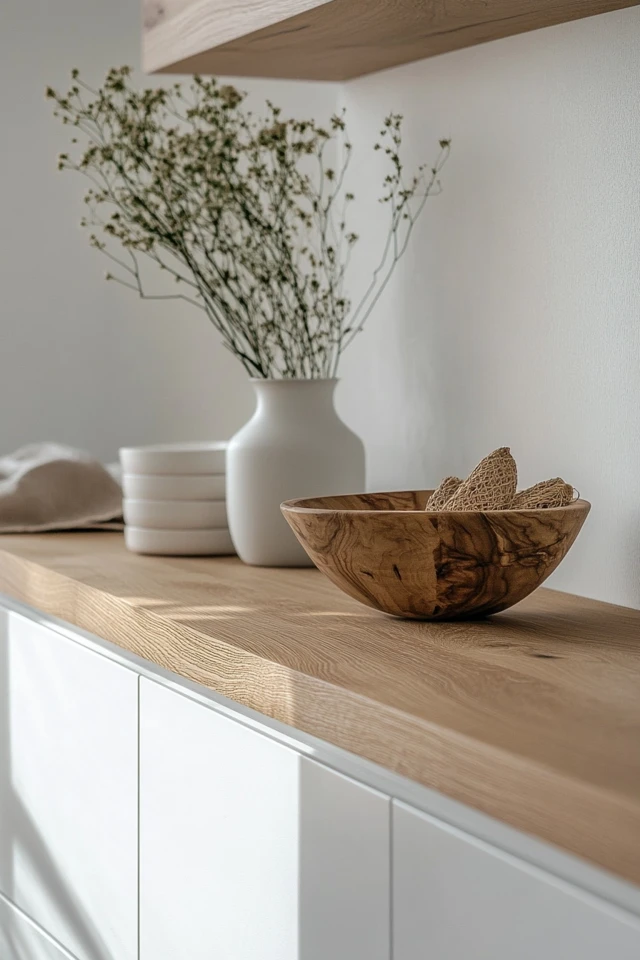
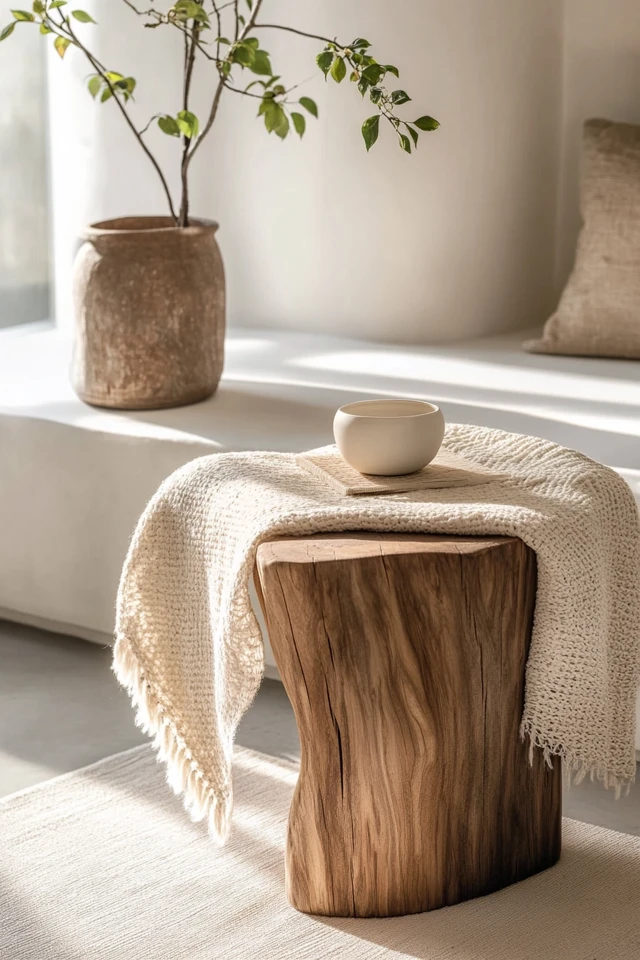
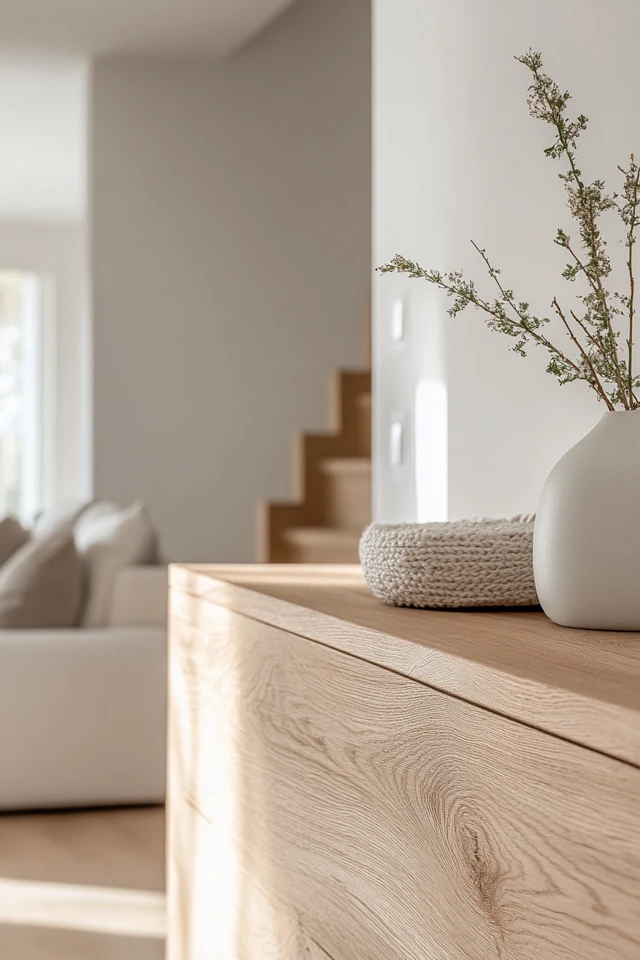
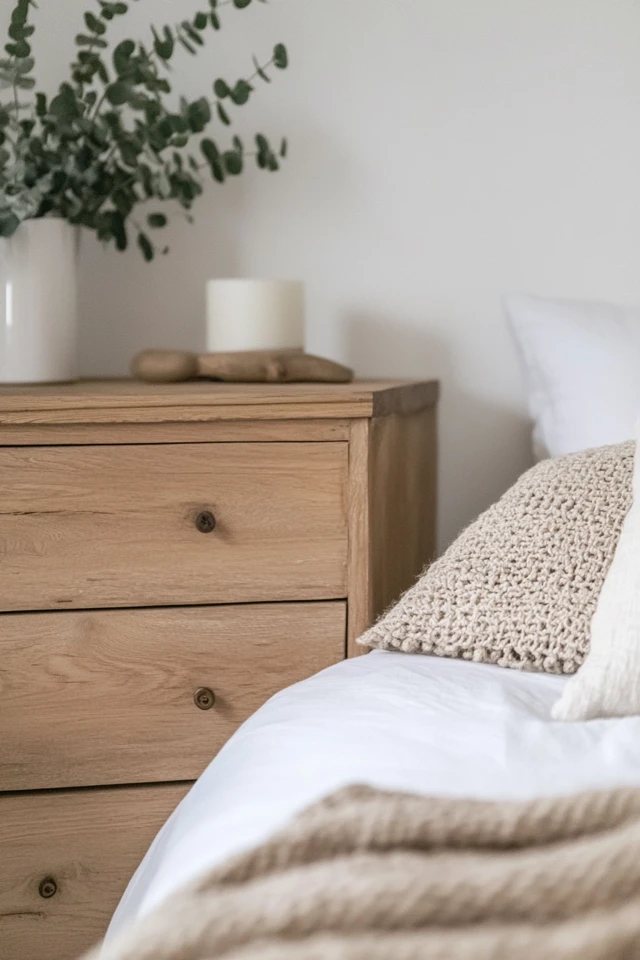
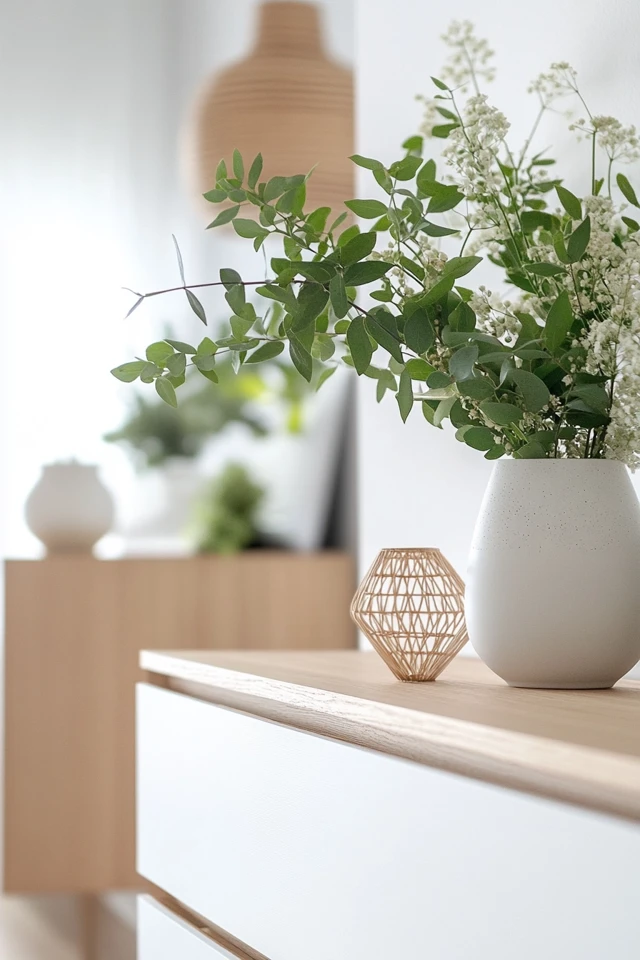
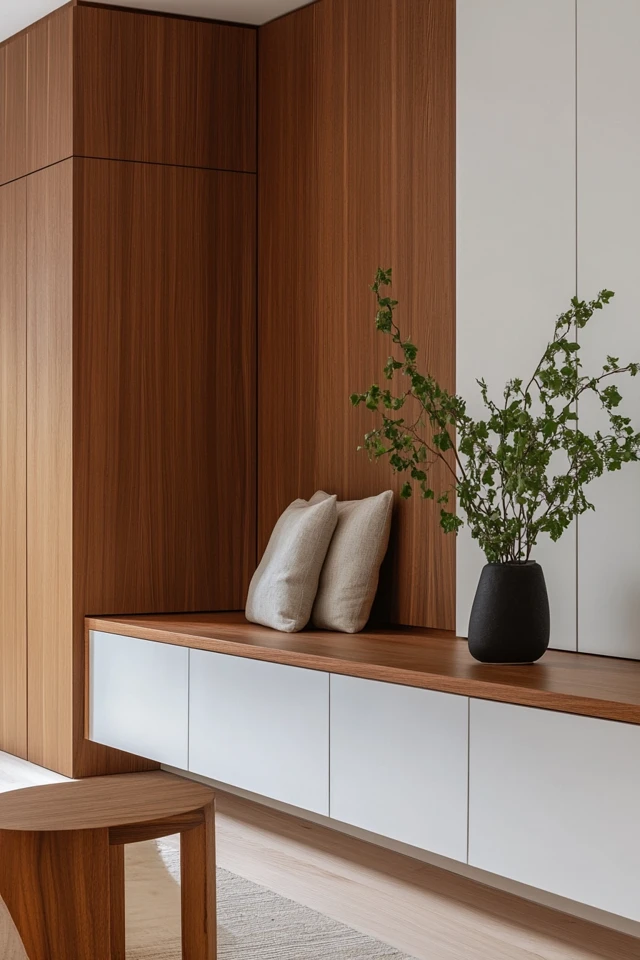
Conclusion
The combination of wood and white is a minimalist’s dream. It offers the perfect blend of warmth and simplicity, making your space feel modern yet inviting. By thoughtfully incorporating natural wood tones into a clean white palette, you can create a timeless and versatile design that works in any room.
Whether you’re designing a serene bedroom, a cozy kitchen, or a modern living room, the key is balance. Let the natural beauty of wood shine against a crisp white backdrop, and keep everything intentional and uncluttered. Your minimalist wood-and-white haven awaits!
FAQs
1. Can I mix different types of wood in a wood-and-white design?
Yes! Mixing wood tones adds depth and interest, but stick to two or three tones to keep the space cohesive.
2. What’s the best white paint for pairing with wood?
Opt for soft whites like Benjamin Moore’s Simply White or Sherwin-Williams’ Alabaster to complement wood tones without feeling too stark.
3. How can I prevent a wood-and-white space from feeling cold?
Incorporate soft textures like rugs, curtains, or throws, and add warm lighting to create a cozy atmosphere.
4. Is wood flooring essential for a wood-and-white design?
Not at all! You can use wooden furniture, shelves, or decor if your flooring is tile, concrete, or carpet.
5. Can wood and white work in small spaces?
Absolutely! The lightness of white can make small spaces feel larger, while wood adds warmth and prevents sterility. Use compact wooden accents like stools or shelves for balance.

